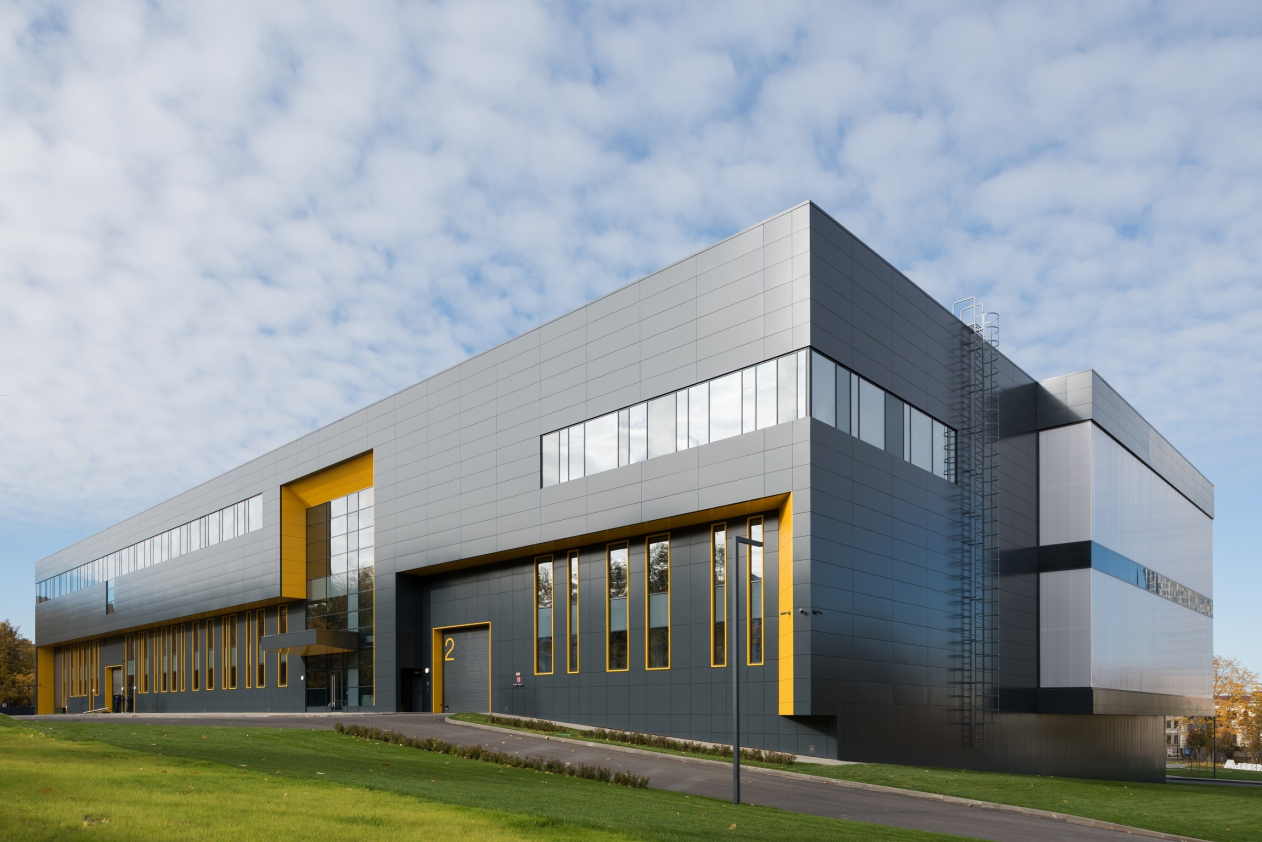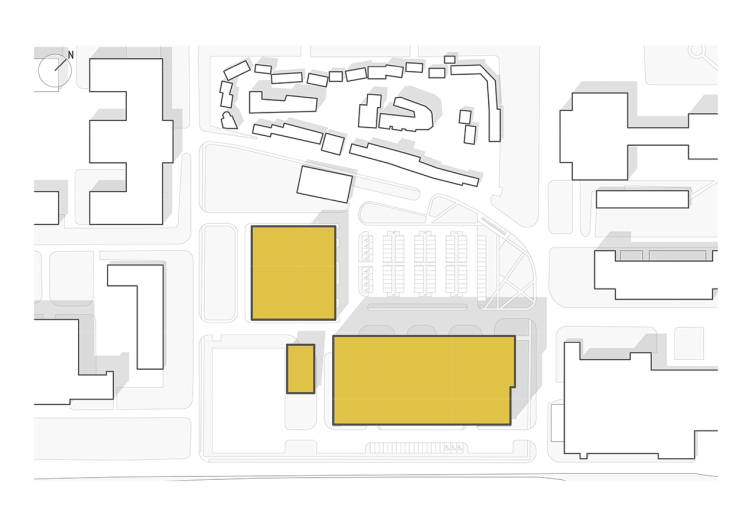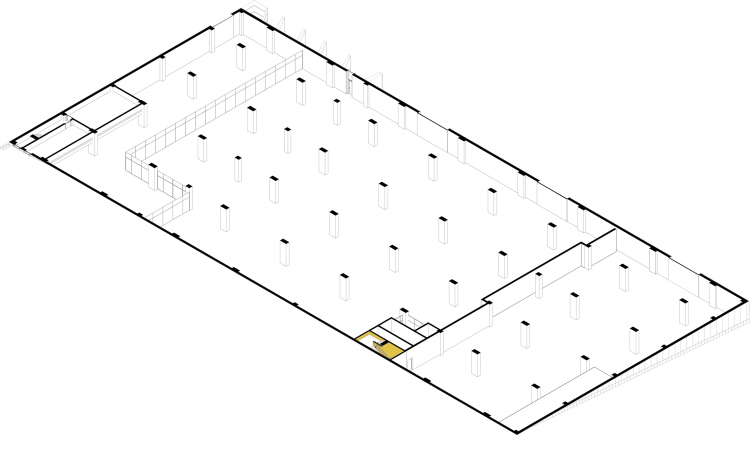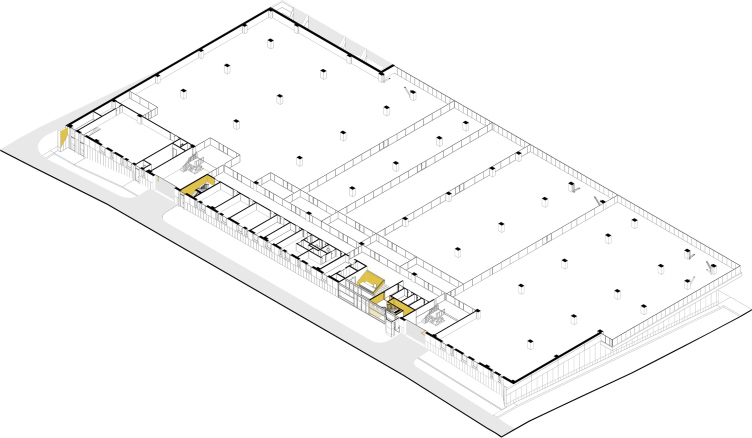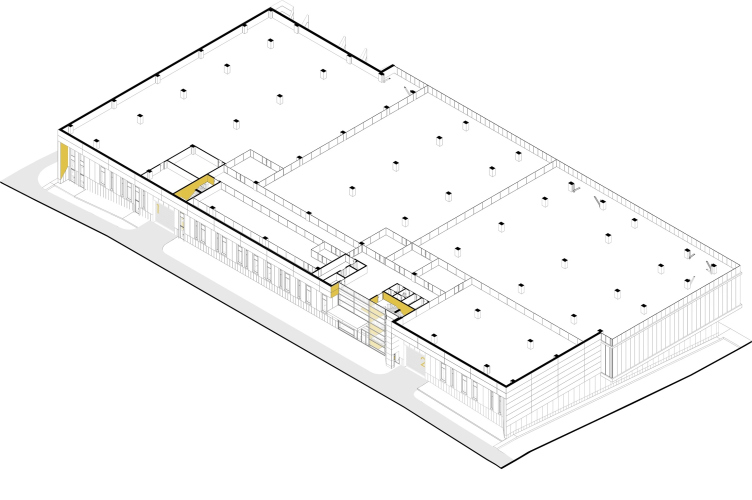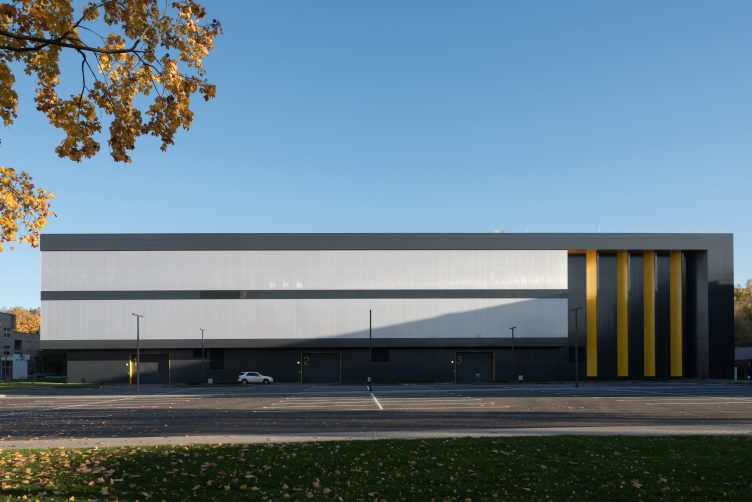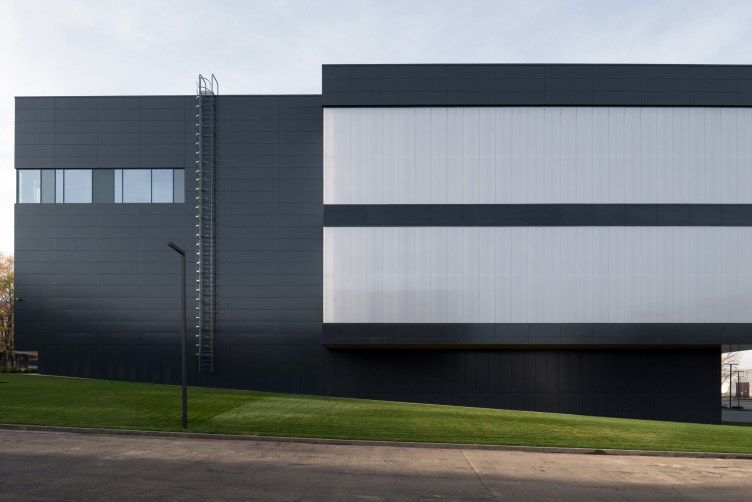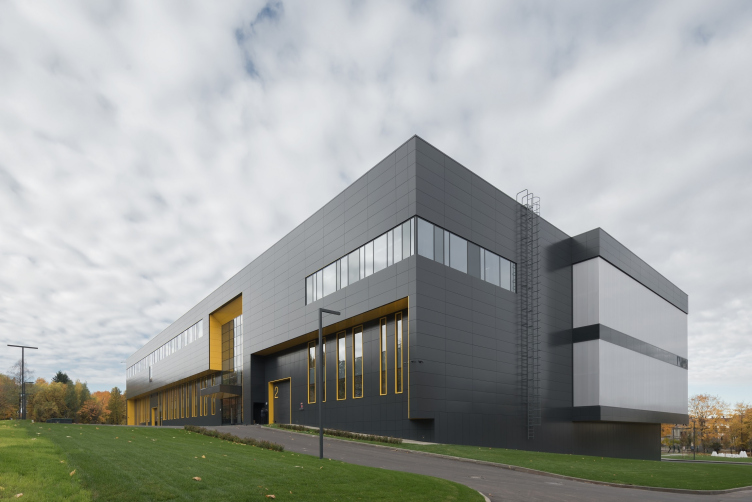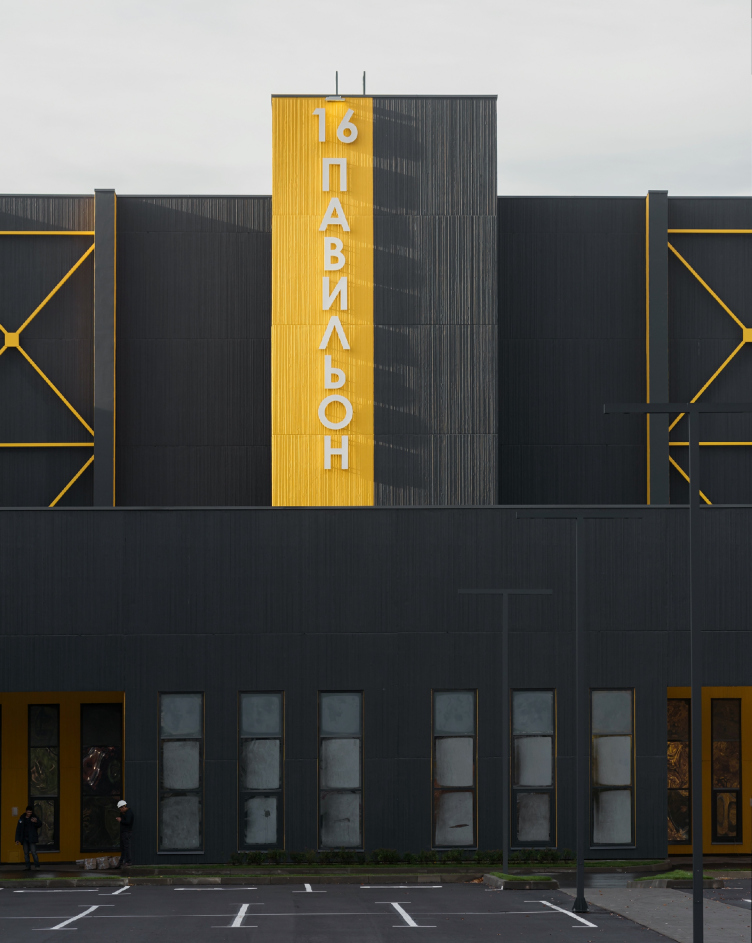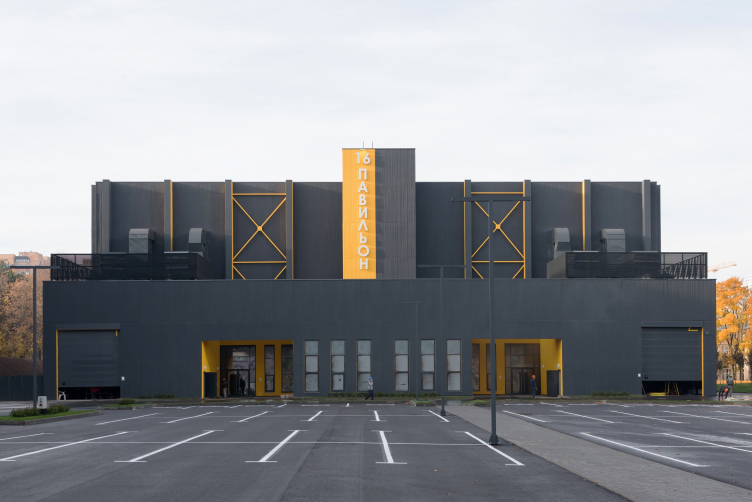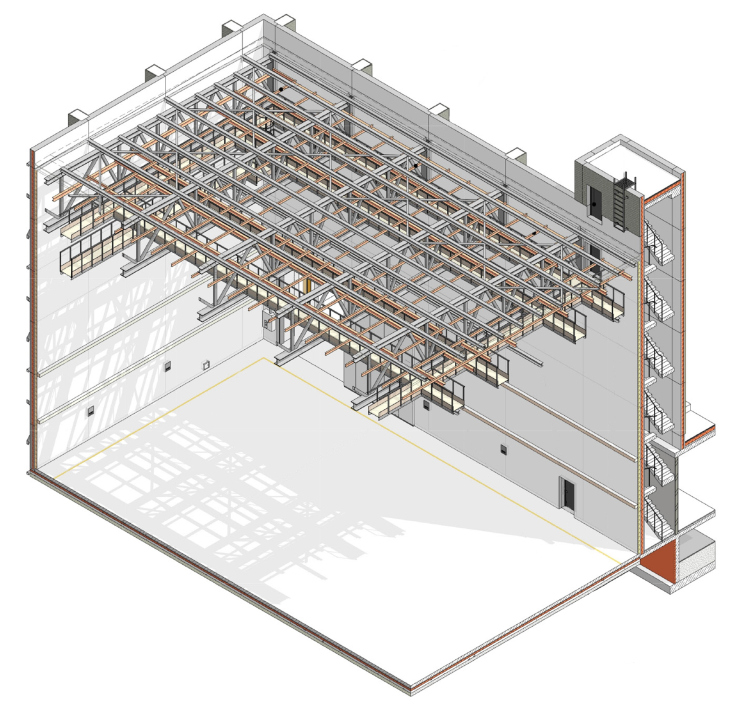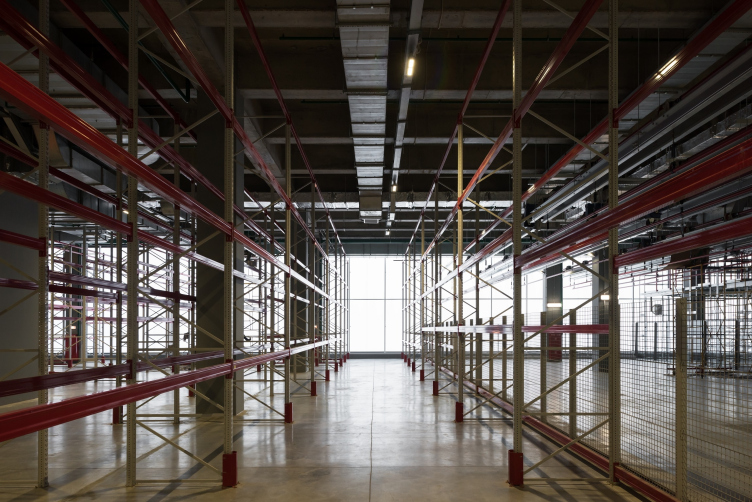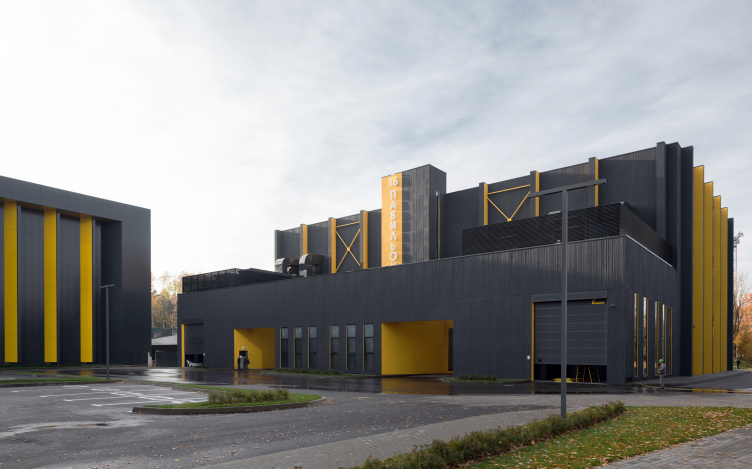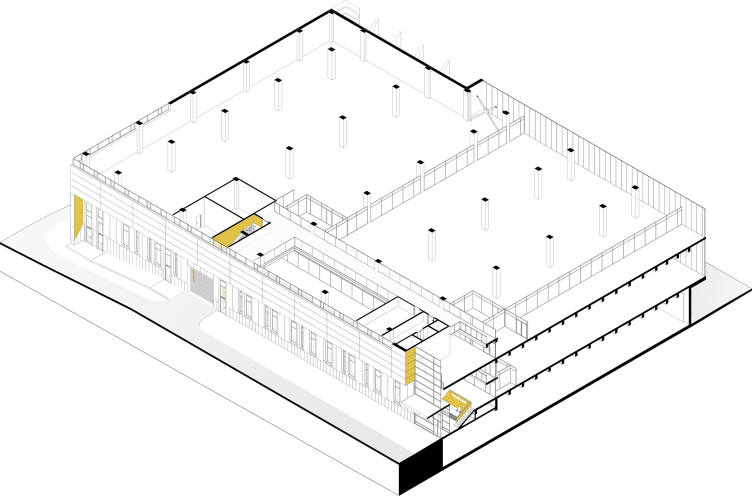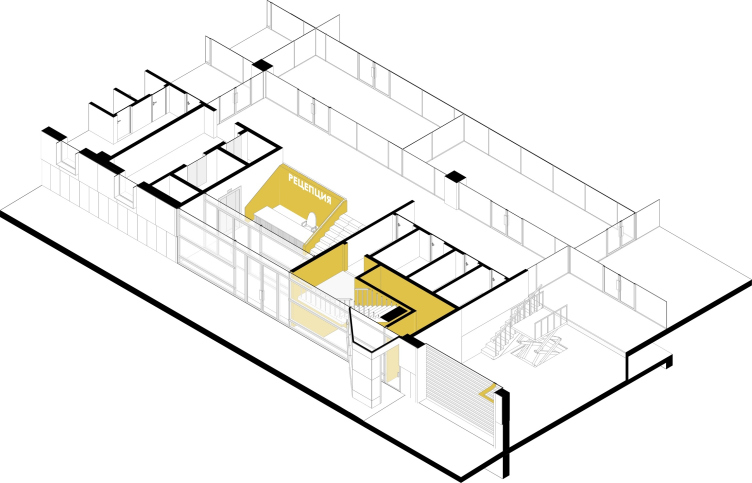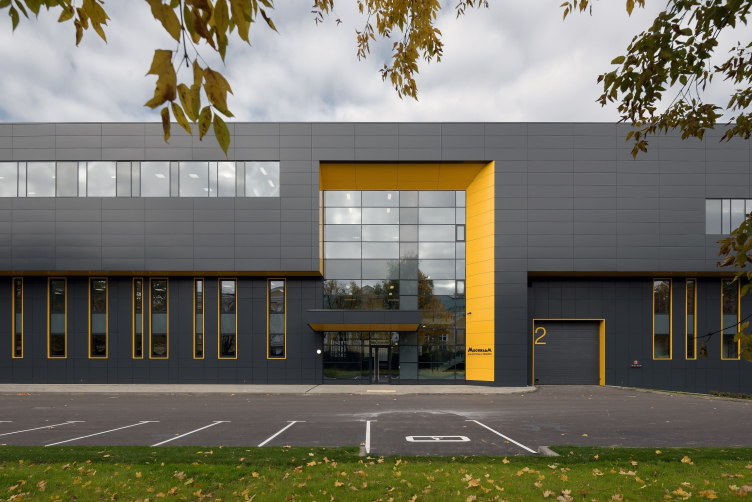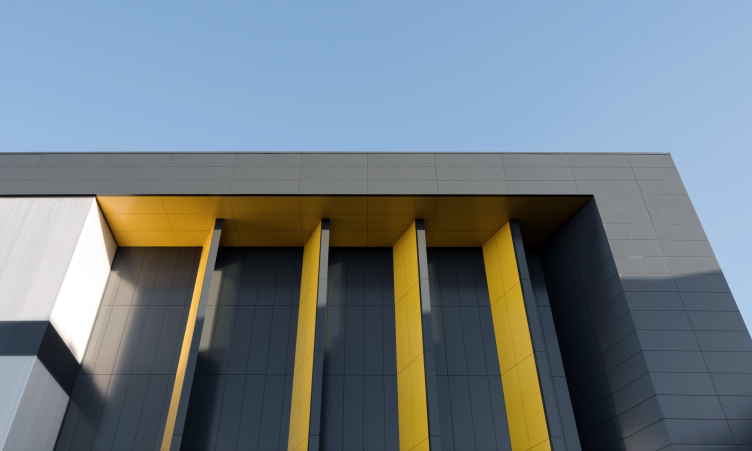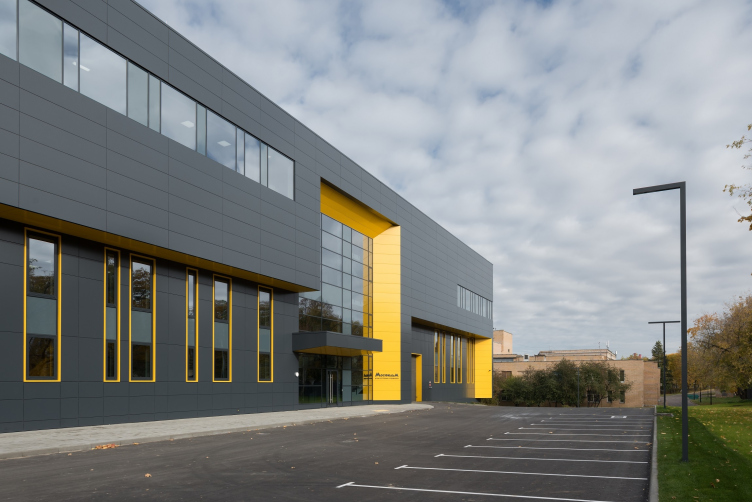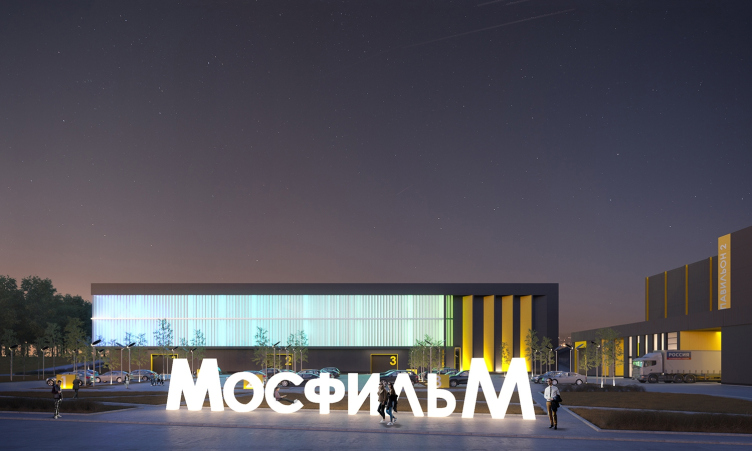The architects were to build two production facilities on the territory of the Mosfilm studio: a new studio floor and a facility for storing the abundant stage property of Mosfilm. “When I found myself there for the first time and they gave me a tour of the place, the thing that struck me most was the architectural ensemble of the 1950’s together with its apple garden – this is a most interesting monument of those days. And at the same time it is amazing how many things there grew obsolete in terms of technology, especially considering the fact that the filmmaking technology constantly evolves and the modern filmmaking is a much more sophisticated system than it was 70 years ago. Mosfilm, unlike Le Studios de Paris or Hollywood, is situated in the city center, which is very convenient. However, while staying on its historical territory and preserving its monuments, a film studio still needs to be developing; this is a natural process for any operating business” – shares Sergey Senkevich, the leader of the architectural studio of the project bureau APEX.
Indeed, one can as much as study the history of architecture of the XX century by the buildings of Mosfilm. The first constructivist building appeared in 1927-1932, then came the neoclassical Stalin buildings standing along the Mosfilmovskaya Street, and the arch of the grand entrance, whose construction began in the 1930’s and finished in 1954 by the author of the project “Bolshoi Mosfilm”, Trankvillitsky, then, in 1964 the utilitarian production facility was built, and in 1978 the stage property storage facility.
Mosfilm production studio © Project bureau APEX. Photograph © Ilia Ivanov
Mosfilm production studio. Master plan © Project bureau APEX
“In the USSR, they had no standardized projects of the buildings for storing clothes or movie props – Sergey Senkevich – so what they did was take a standardized project of vegetable wholesale warehouse and adapted it for storing costumes. For the sole exception of the caretakers, nobody knew which thing lied where, and pretty often, because of the inadequate storage conditions, costumes turned out to be eaten by moths”. The obsolete building, as well as the pyrotechnic workshops, which became redundant in the age of special digital effects, were replaced by new buildings.
The studio floor and the House of Costume and Stage Property were part of a federally sponsored project – Mosfilm is still financed from the state budget. In 2013, its General director Karen Shakhnazarov forwarded his suggestions on the development of Mosfilm to the president of the Russian Federation, and a little later some of the Mosfilm territory, at the presidential order, was handed over to an investor for the construction of housing property. There was a condition, however, that the investor would build two studio stages, a Movie and Concert Hall and a stage property storage facility. As part of this program, APEX designed Studio Floor 16, and the House of Costume. The work was preceded by the sketch of the stage property storage facility proposed by the film studio: one turquoise and with a big skylight – and a similar set of specifications. The architects made some major revisions to the sketch, convincing the client in the correctitude of their solutions, at the same time staying within the budget.
Mosfilm production studio. 3D © Project bureau APEX
The basement floor of the stage property storage facility is now used for storing retro cars. One can see all sorts of vintage cars here: Russo-Balts, Bentleys, Rolls-Royces, the Soviet “Volga” and other vehicles familiar to the Russian audience from numerous domestic movies. An individual room is provided for horse-drawn vehicles – carts, cabs and carriages – and still another – for film vans.
The storage of costumes and props, which is situated on the higher floors, is catalogued. At first they planned to use a “carousel” mechanism of serving the props, but under a small number of revolutions this would not be economically efficient, and they fell back on the pallets-and-shelf system. The building also hosts a carpentry and prop shops. The first floor includes furniture, bulky props and chandeliers, the second – costumes, the third – footwear, so as to minimize the necessity to bring heavy things from the upper floors.
Mosfilm production studio. Facade © Project bureau APEX
Mosfilm production studio. 3D plan of the basement floor © Project bureau APEX
Mosfilm production studio. 3D plan of the first floor © Project bureau APEX
Mosfilm production studio. 3D plan of the second floor © Project bureau APEX
The budget assigned for the façade design and construction was limited, besides, it was important to provide as much ambient light as possible, and the skylight in the middle did not solve the problem. The budget and insolation problem was to a large extent solved by polycarbonate, which, as is known today, ages slowly, and has generally become a popular building material of the modern art and architecture. “The façade will not show any signs of aging for at least 40 years –Sergey Senkevich says – The Austrian-made polycarbonate 5 centimeters thick turned out to be the optimum solution. Polycarbonate is a material that you can bend; it looks beautiful at dawns and sunsets. In addition, we had a task of essentially building a warehouse, and this material turned out to be quite adequate to that functional task”.
Mosfilm production studio © Project bureau APEX. Photograph © Ilia Ivanov
Mosfilm production studio © Project bureau APEX. Photograph © Ilia Ivanov
Mosfilm production studio © Project bureau APEX. Photograph © Ilia Ivanov
A studio floor is essentially an enclosed space, you need absolute silence inside of it, and therefore it is coated with three-layered concrete panels mounted on reinforced concrete framework. “The analogues – Cité du cinéma near Paris and Pinewood studios in London, and other studio floors are all made of concrete – Sergey Senkevich says – We found RECKLI formliner and achieved this crumpled texture because it’s not worth your will producing smooth-surface concrete in Russia because you will not be getting the required quality anyway”.
Mosfilm production studio © Project bureau APEX
Mosfilm production studio © Project bureau APEX. Photograph © Ilia Ivanov
Mosfilm production studio © Project bureau APEX. Photograph © Ilia Ivanov
For the studio floor, Mosfilm tested a lot of space configurations. They ultimately settled on 54x30 meters, which yields an area a little over 1500 square meters of useful floor space, 18 meters high. This is the optimum format that makes it possible to shoot both shows and feature films. There is also a small acting workshop – make-up and dressing rooms and so on. The designers and architects designed, in the single BIM-environment, a system of runway or “hoist” beams, the kind you would see at a factory, the beams are capable of holding up a 500-kilogram prop riding on a special cart.
Mosfilm production studio. Cross-section view of the studio floor © Project bureau APEX
Mosfilm production studio © Project bureau APEX. Photograph © Ilia Ivanov
Mosfilm production studio © Project bureau APEX. Photograph © Ilia Ivanov
Mosfilm production studio © Project bureau APEX. Photograph © Ilia Ivanov
Mosfilm production studio. Cross-section view 1 © Project bureau APEX
Mosfilm production studio. Cross-section view 2 © Project bureau APEX
The two buildings form an ensemble due to the general rhythm and color solution – a combination of coal-gray and yellow cadmium: the first emphasizes the functionality of the hangar buildings, the second livens them up with a “sunny” accent. It is possible that the dark background indicates the hard work of filmmakers, and the yellow splashes are designed to remind you of the “gold” of a successful motion picture. In addition, the color verticals structure the volumes, compensating for their horizontal position, and somewhere, for example, at the Costume House, the yellow slopes stop the movement of the polycarbonate ribbon cantilevered structure. From the opposite side, they form an entrance portal, framing a stained glass window with a staircase behind it. It must be mentioned that the Mosfilm employees initially insisted on a smaller door, fearing freezing, but the architects were able to convince them. “Now in the space of the staircase, you can make exhibitions of props” – the authors suggested.
Mosfilm production studio © Project bureau APEX. Photograph © Ilia Ivanov
Mosfilm production studio. Facade © Project bureau APEX
Mosfilm production studio. Facade © Project bureau APEX
Mosfilm production studio © Project bureau APEX. Photograph © Ilia Ivanov
Mosfilm production studio © Project bureau APEX. Photograph © Ilia Ivanov
Mosfilm production studio © Project bureau APEX. Photograph © Ilia Ivanov
Mosfilm production studio © Project bureau APEX. Photograph © Ilia Ivanov
At the corner of the parking lot between the two buildings, the logo of the cinema concern was set up – well-known brand letters starting with a sharp-angled “M”. The letters, set not in front of the entrance or entrance, but almost in the middle of the Mosfilm territory, became a kind of internal heading, not a signboard, but the core. “People climb these letters and take selfies for Instagram” –Sergey Senkevich says. “I think that when they take pictures of themselves against the background of the warehouse, this is a success.”
Mosfilm production studio © Project bureau APEX
The letters are reminiscent of the 1950’s the golden age of Moscow film studio, and about the multitude of iconic films. Anyway, let’s live and learn: maybe the two new buildings, which not only added to the Mosfilm production assets, but also noticeably refreshed its territory, will become the driver of the development of the metropolitan cinema.
